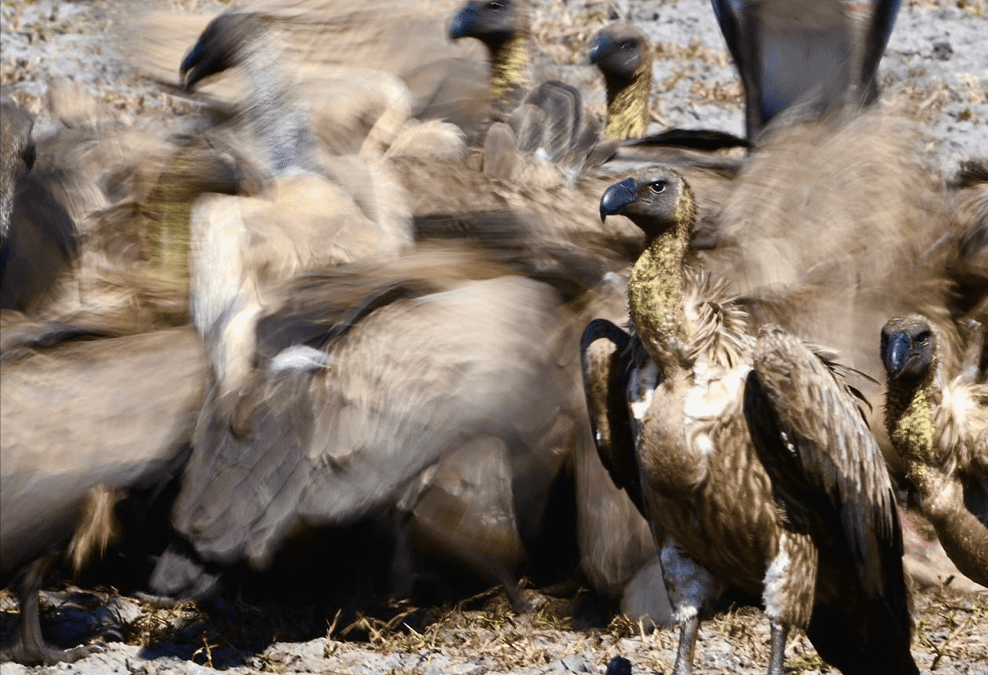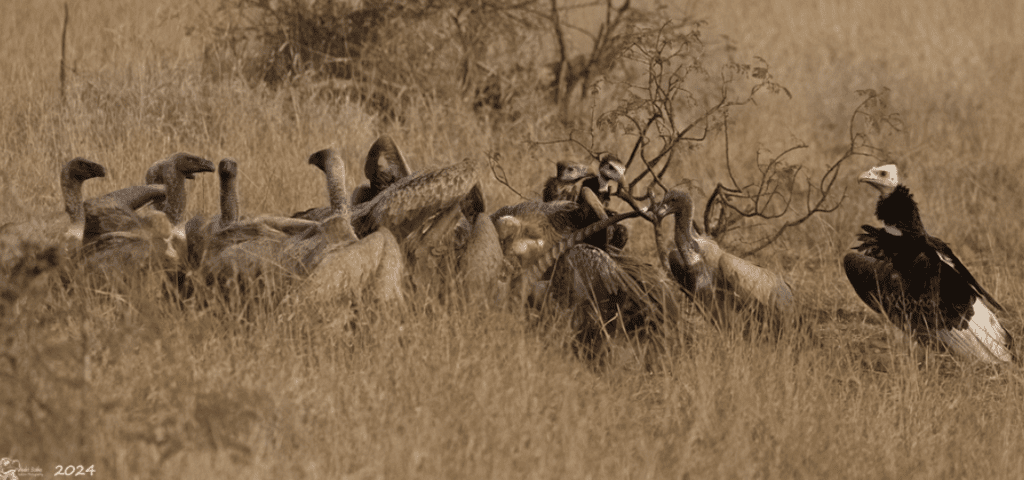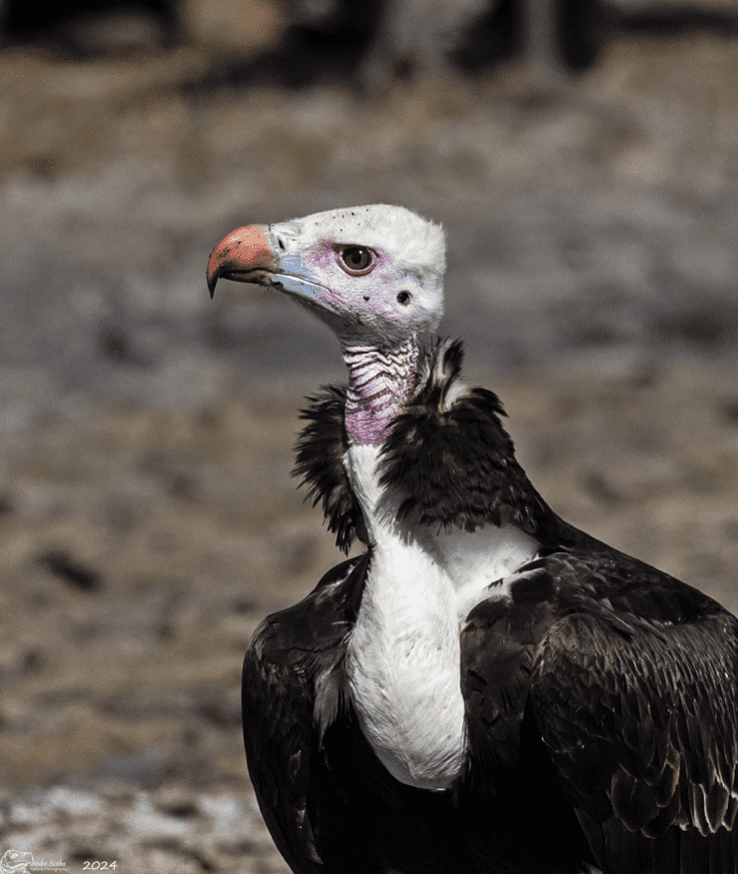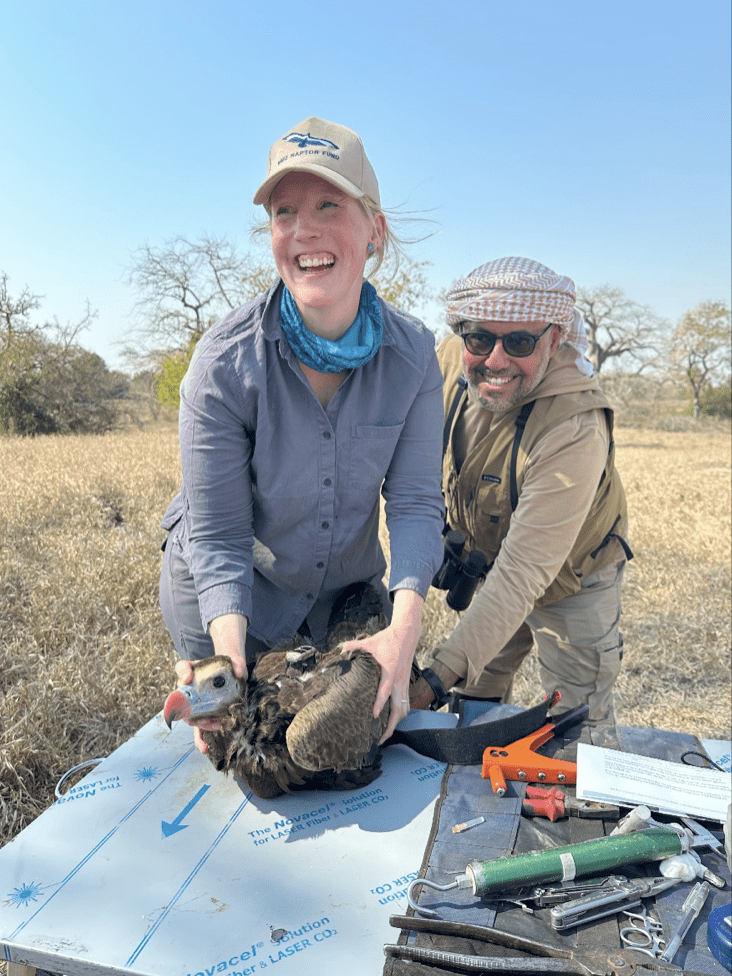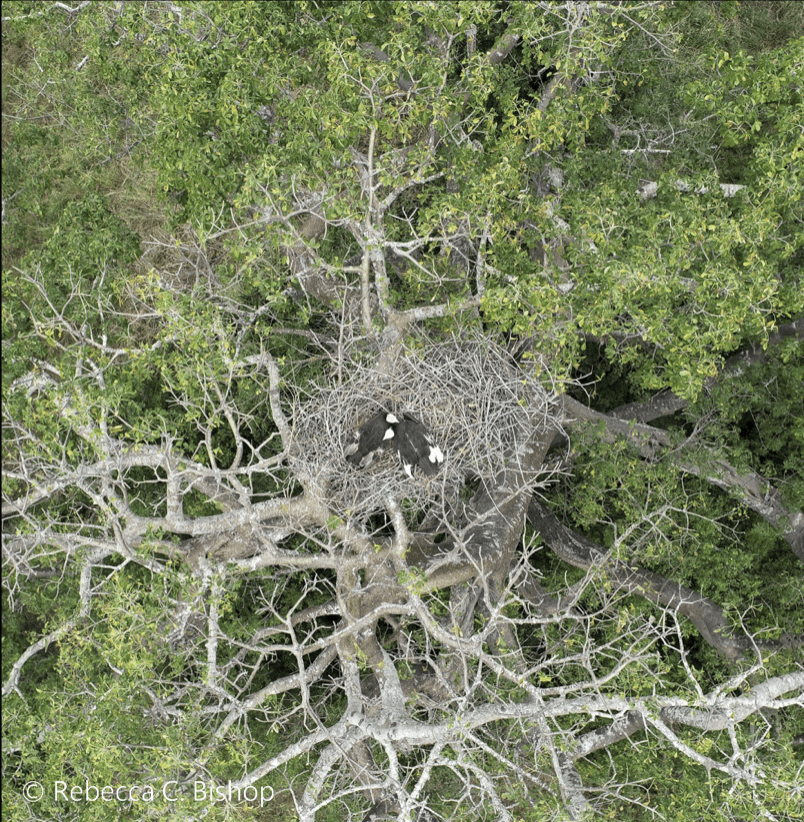Top photo: Munir Virani. The feeding frenzy at a carcass – White-backed Vultures & a Marabou Stork in Gorongosa National Park.
by Rebecca Bishop
Twelve minutes. This is the time it takes for a group of vultures 30 strong to consume the carcass of a medium-sized herbivore down to the ribcage in Gorongosa National Park. Before notice of the dead animal can even be made, nature’s clean-up crew is on the case. For International Vulture Awareness Day (IVAD), we celebrate these unsung heroes of ecosystems worldwide, while simultaneously bringing visibility to their dire conservation status.
Vultures provide irreplaceable services to the environment through the efficient removal of organic waste. This disposal system is critical to maintaining balance within the food web and in the regulation of disease transmission. In systems where vultures have disappeared, shifts in scavenger composition, abundance, and behavior have been observed, often resulting in negative impacts to human health. Yet, while these bald beauties are valuable, vultures remain the most threatened bird group of the present day and are faced with threats ranging from habitat loss to poisoning. In Africa, vulture declines have been swift over the past few decades.
Gorongosa National Park is regularly utilized by five of the six species of vulture found in Mozambique. Of these five resident species, four are currently threatened with extinction: the Lappet-faced Vulture (Torgos tracheliotos) is listed as Endangered, while the Hooded (Necrosyrtes monachus), White-backed (Gyps africanus), and White-headed (Trigonoceps occipitalis) Vultures are all listed as Critically Endangered. On any given day in the park, all four of the aforementioned species can be seen feasting together at carcasses, that include impala (Aepyceros melampus), warthog (Phacochoerus africanus), and waterbuck (Kobus ellipsiprymnus).
White-backed-, Hooded and White-headed Vulture feeding on a Waterbuck carcass in Gorongosa National Park.
While each member of Gorongosa’s vulture crew is equally important, the White-headed Vulture could be considered a star player. Relative to other species of African vulture, the White-headed Vulture is extremely rare with population estimates hovering around 5,500 total individuals. Given this rarity, the species has been challenging to study, resulting in limited species-specific knowledge. However, in Gorongosa National Park, the uncommon White-headed Vulture is commonly seen soaring above the vast floodplain and nesting atop towering baobab trees – providing a window to study the species further and inform effective conservation action.
An adult female White-headed Vulture with a partially filled crop after feeding.
Fortunately, research is underway at Gorongosa National Park with a continued focus on the imperiled White-headed Vulture. The Endangered Wildlife Trust, in partnership with the Mohamed bin Zayed Raptor Conservation Fund, has initiated a multi-faceted project to increase ecological understanding and enhance conservation efforts of the White-headed Vulture while developing raptor conservation leadership for the park. Ongoing comprehensive nest monitoring, measures of breeding success, and the analysis of movement data will provide vital information and the ability to identify potential threats across scales. In addition, the three-year project aims to increase awareness of issues affecting all vultures through education initiatives and community engagement.
July 2024 marked the beginning of the project’s on-the-ground efforts in Gorongosa. The Project’s Manager, Rebecca Bishop, and André Botha, Vultures for Africa Programme Manager, were joined by Dr. Munir Virani, Chief Operating Officer, and Mohammed Saleh Al Baidani, both of the Mohamed bin Zayed Raptor Conservation Fund, and Gorongosa National Park Research Technicians Diolinda Mundoza, Raúl Chomela, and Dadzie Tarua, to deploy GPS transmitters on White-headed Vultures. The trip was made possible through the generous donation of four Infinity GPS tracking units from Marshall Radio Telemetry, based in Salt Lake City, Utah, USA. Over a six-day period, full of trapping expertise and patience, the team was able to reach their goal, and all four units were placed on Critically Endangered White-headed Vultures. In honor of the surrounding communities, the birds were aptly named Beira, Chitengo, Dondo, and Gorongosa.
Left photo – Rebecca Bishop and Mohammed Saleh Al Baidani with one of the four White-headed Vultures that were fitted with satellite tracking units. Right photo – André Botha and Raúl Chomela collecting biometric data from an immature Bateleur, one of 8 birds of this species trapped during fieldwork this season.
Data gathered from these birds will be used to determine how individual White-headed Vultures interact with the environment over time and space, as well as help identify key resources. The vulture team also incidentally caught, ringed, and collected biometric data on three White-backed Vultures and eight Bateleur Eagles (Terathopius ecaudatus), which was an added highlight to an already successful trapping endeavor.
In the second half of the field season, known vulture nest sites within the park were surveyed for breeding activity. These locations were originally sourced from biennial aerial surveys conducted by Gorongosa National Park Scientific Staff and through graduate research at Boise State University and The Intermountain Bird Observatory out of Idaho, USA. Project staff checked numerous historical locations and discovered four new White-headed Vulture nest sites this season. Of the active nests, White-headed Vultures were observed sitting tight on the contents of the nest. Pairs share responsibilities during the 55-day incubation period as well as the approximately 115-day fledging period, and sexes can be differentiated at a nest site based on differences in plumage. In future years, nest checks will be conducted at various times within the lengthy breeding period to gather data related to rates of survival.
Drone view of an active White-headed Vulture nest with a pair on a Baobab in the Gorongosa National Park.
Looking forward, the project team is excited to work toward a self-sustaining program in Gorongosa National Park which benefits the long-term conservation of not only the White-headed Vulture, but other endangered vultures as well, all while prioritizing collaboration with local partners and communities.
Happy International Vulture Awareness Day from the White-headed Vulture Research & Conservation Initiative in Gorongosa National Park!
